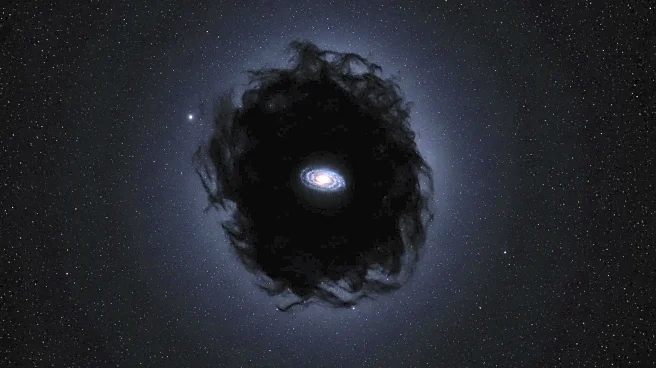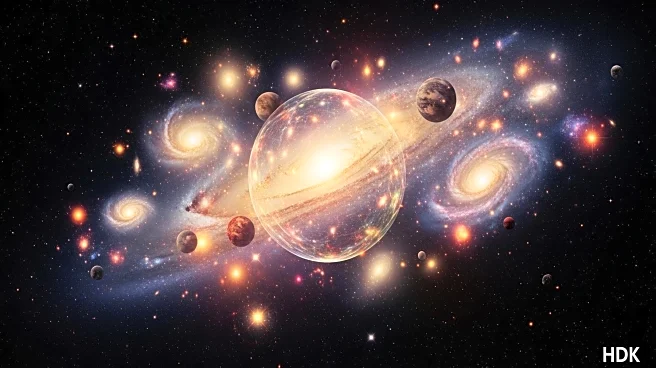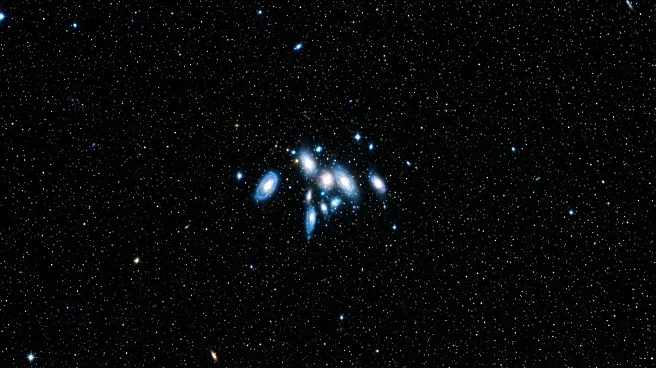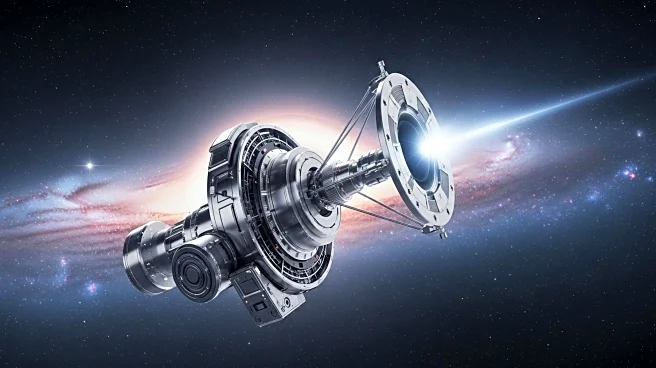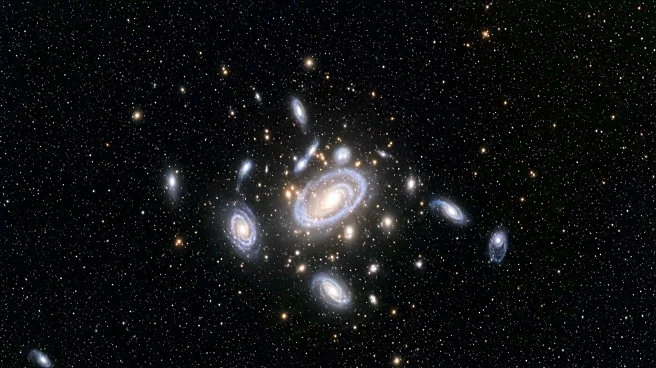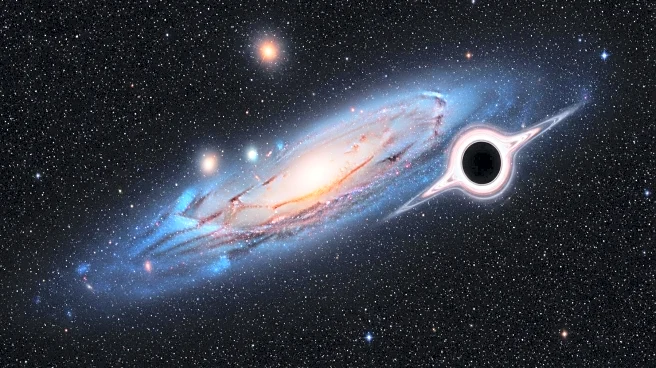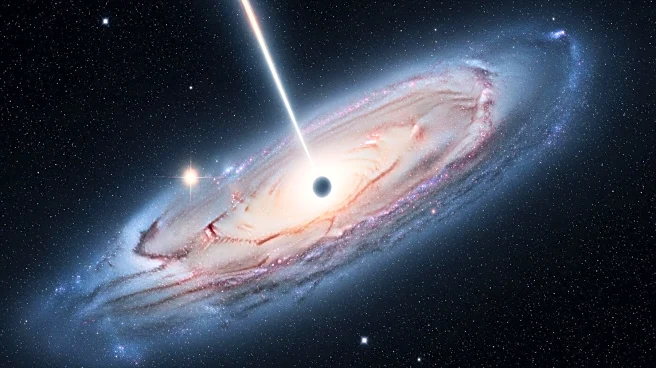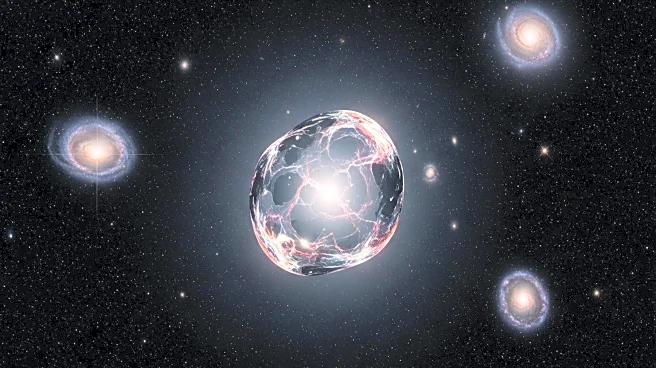What is the story about?
What's Happening?
The James Webb Space Telescope (JWST) has captured images of eight 'Einstein rings,' a phenomenon known as gravitational lensing, which was first predicted by Albert Einstein over a century ago. These images reveal galaxies that appear stretched and warped into perfect circles due to the gravitational pull of massive galaxies acting as natural magnifying glasses. This effect occurs when light from a distant galaxy passes through the warped space around a massive object, bending the light's path and creating arcs or rings. The images are part of the COSMOS-Web project, one of the largest observing programs conducted with JWST, which involved 255 hours of telescope time and the observation of over 42,000 galaxies. The project identified more than 400 potential Einstein rings, with the eight highlighted being among the most dramatic.
Why It's Important?
The discovery and imaging of these Einstein rings are significant for several reasons. Gravitational lensing allows astronomers to see distant galaxies that would otherwise be invisible, providing a clearer view of the universe's early years. This phenomenon also enables scientists to measure the mass of galaxies, including the elusive dark matter that cannot be observed directly. By studying these rings, researchers can gain insights into the formation of galaxies, star clusters, and the role of dark matter in shaping the cosmos. The JWST's advanced infrared capabilities have revealed details previously hidden, offering new opportunities for understanding the universe's history and structure.
What's Next?
The rare alignments that create Einstein rings offer astronomers a unique opportunity to study the building blocks of galaxies and the universe's early development. Future observations and analyses of these rings could provide further insights into the nature of dark matter and the processes that governed the formation of galaxies. As the JWST continues its mission, it is expected to uncover more such phenomena, contributing to a deeper understanding of the universe's evolution and the fundamental laws of physics.
Beyond the Headlines
The implications of these findings extend beyond astronomy, touching on fundamental questions about the universe's structure and the forces that govern it. The ability to observe and analyze gravitational lensing not only confirms Einstein's theories but also challenges scientists to refine their models of the universe. This research could lead to breakthroughs in our understanding of dark matter and the overall composition of the cosmos, potentially influencing future scientific and technological advancements.
AI Generated Content
Do you find this article useful?



